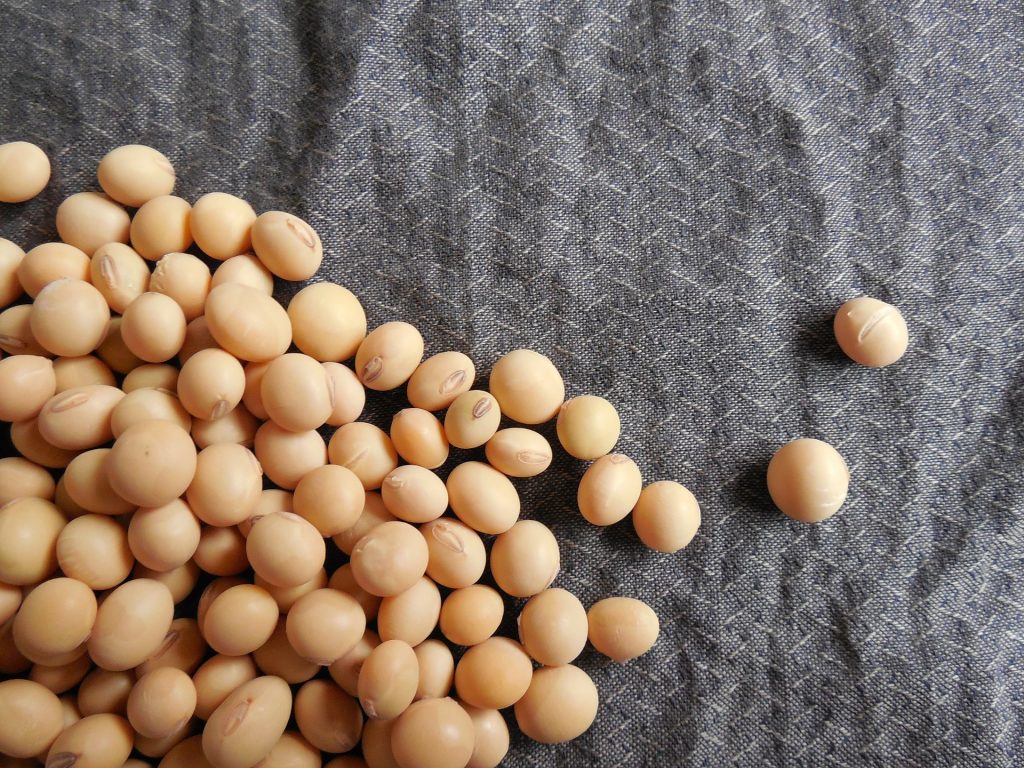Soy is not just for vegetarians and livestock! These nutrient-packed beans can be found in a variety of foods and forms, offering health benefits for vegetarians and carnivores alike.

Why Eat Soybeans?
- High in protein — about 14 grams per 1/2 cup, equivalent to about two ounces of meat.
- A complete protein — contains adequate amounts of all the essential amino acids, making it a great meat substitute.
- Low in saturated fat and cholesterol-free.
- Good source of several vitamins and minerals, including iron, potassium, and vitamin K.
- Fiber — about 5 grams of fiber per 1/2 cup.
- Soy isoflavones — these phytochemicals or “plant nutrients” have shown anti-cancer properties.
There are lots of delicious ways to enjoy soy!
- Edamame (green soybeans) — located in the freezer section of most grocery stores. Serve in the pods, or toss shelled edamame in your favorite stir-fry or pasta dish.
- Soymilk — made from ground soybeans mixed with water. Usually fortified with calcium, this makes a great substitute for dairy milk.
- Soy nuts — crunchy snack made from baked or roasted soybeans. These can also replace nuts or croutons.
- Tofu — made from curdled soymilk and pressed into blocks. This versatile food comes in several textures (from silken to extra firm) and can be used in anything from smoothies to stir-fries.
- Tempeh — made from fermented soybeans. It has a firm texture that holds up well to slicing and grilling.
- Textured Vegetable Protein (TVP) — can be found in dried flakes, frozen crumbles, and a variety of other products. Use this for replacing or extending ground meat.
Did You Know?

Soy is full of nutrients and high-quality protein, but at a fraction of the cost of other protein sources.
Incorporating soy products in a few meatless meals each week can have a big positive impact on your food budget, the environment, and lowering your saturated fat intake!
The National Soybean Research Laboratory at the University of Illinois has been working on ways to use soy to address hunger and malnutrition internationally. For instance, they have found that products like soy flour and textured vegetable protein can be added to many foods at a relatively low cost. This can dramatically increase the intake of high-quality protein in populations at risk for malnutrition.


